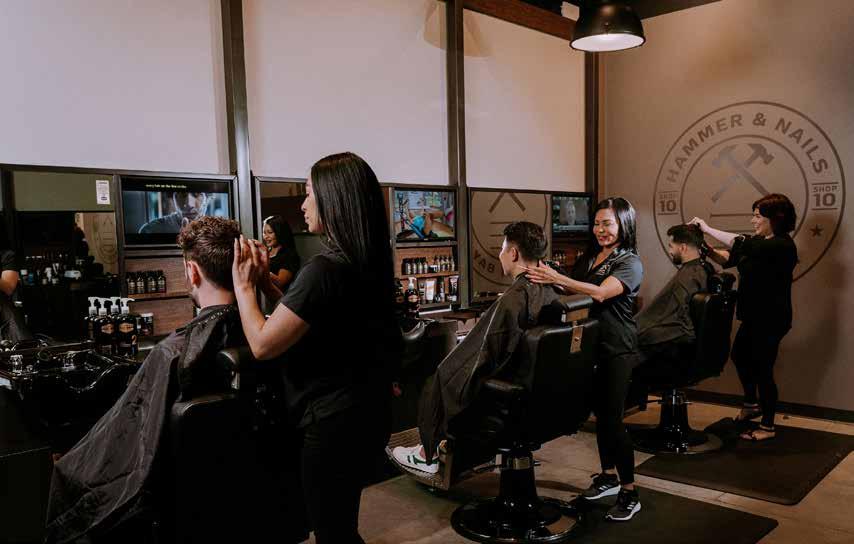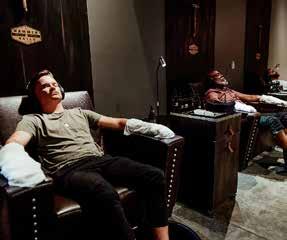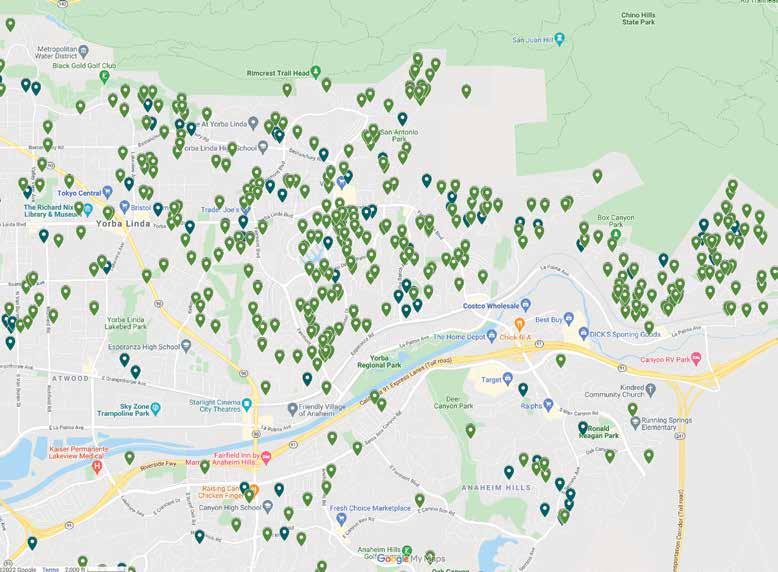LOCAL SERVICES
UNLOCK YOUR DOG'S TRUE POTENTIAL
LIFE + CULTURE
NAVIGATING TEEN INDEPENDENCE: GUIDE FOR PARENTS
PET OWNERSHIP: BENEFITS BEYOND COMPANIONSHIP FOR CHILDREN
ARTS + CULTURE
PETER PAN SOARS ANEW, ENCHANTING ALL
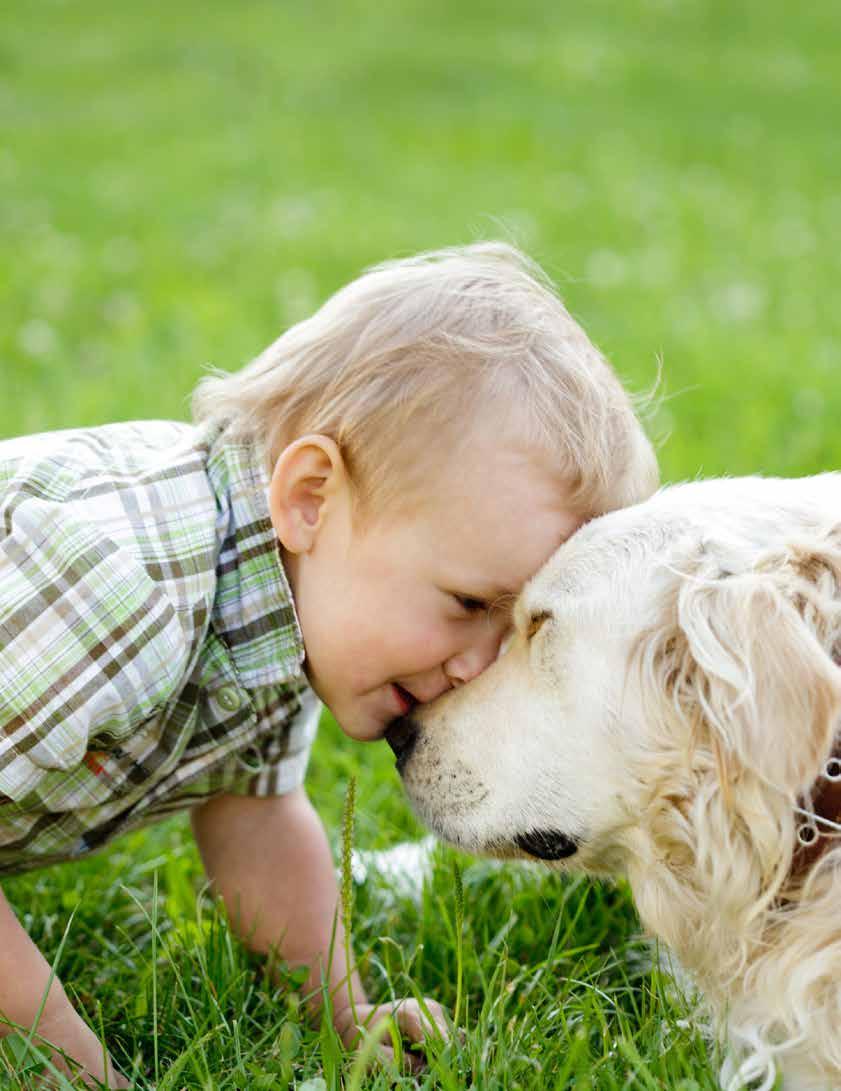
Kids & Pets








































Bill McIntosh








LOCAL SERVICES
UNLOCK YOUR DOG'S TRUE POTENTIAL
LIFE + CULTURE
NAVIGATING TEEN INDEPENDENCE: GUIDE FOR PARENTS
PET OWNERSHIP: BENEFITS BEYOND COMPANIONSHIP FOR CHILDREN
ARTS + CULTURE
PETER PAN SOARS ANEW, ENCHANTING ALL









































Bill McIntosh







As summer vacation winds down, we bid farewell to carefree mornings and adventurous days, making way for the structured routines of school and sports.
In our August issue, we celebrate the joys of children and pets. Their ability to make us feel special, their loyalty, and their sense of wonder are truly refreshing.
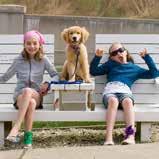
Children are not just the promise of a brighter tomorrow; they are the very foundation of our society. Their innocence, curiosity, and limitless potential have the power to shape our world in ways beyond imagination. They represent our greatest investment, our hardest work, and our immense pride.
And who could forget our beloved pets? The unique companionship they offer can be transformative for both children and adults alike. Pets teach us unconditional love and provide opportunities for learning and personal growth in a nurturing environment. The bond between kids and their furry or feathered friends is often profound, fostering qualities like empathy, responsibility, and companionship.
We invite you to enjoy the articles in this issue, from exploring the unique relationship between children and pets, and empowering teens as they approach adulthood to discover the life lessons our furry friends teach us and unleashing our pet's happiness and potential. We hope these stories inspire you to enrich the lives of the children and pets in your world this month.
Thank you for reading Lifestyle and I hope to see you around town!

PUBLISHER
Brian Patchett | brian.patchett@citylifestyle.com
EDITORIAL COORDINATOR
Tawanna Cullen | tawanna.cullen@citylifestyle.com
CONTRIBUTING WRITERS
Heather Whitsitt, Lisa Weihebrink, Kimberly Blaker
CONTRIBUTING PHOTOGRAPHERS
Art Cordero, CoreMedia Photography, Jess Vidana Photography
CHIEF EXECUTIVE OFFICER Steven Schowengerdt
CHIEF OPERATING OFFICER Matthew Perry
EXECUTIVE DIRECTOR OF HR Janeane Thompson
AD DESIGNER Matthew Endersbe
LAYOUT DESIGNER Kelsey Ragain


Learn how to start your own publication at citylifestyle.com/franchise.







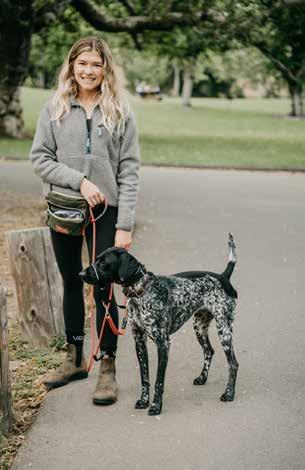

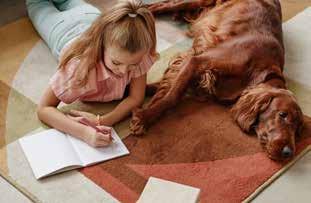

















The City of Yorba Linda Parks and Recreation Department is looking for enthusiastic and responsible 7th and 8th-grade middle school students to form the Teen Action Committee for the 2024-2025 school year. Duties may include, meeting to address various current issues facing Yorba Linda youth, participating in a community service project, and volunteering for City programs and special events. For more info. call 714 961-7192 or visit www.yorbalindaca. gov/DocumentCenter/View/4591/ TAC-Application-2024-2025

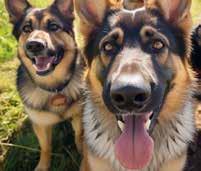
GSROC is a non-profit 501 (c)3 charity organization dedicated to rescuing and re-homing purebred German Shepherd dogs that have nowhere else to turn. Funded by private donations and receive no government support. Pet Adoption, Bake Sale, and Fundraiser event at the PetSmart in Yorba Linda. This is a fun event and our dogs are very excited to be included. We hope you can stop by and meet them. August 17 @ 11:30 am-2:00 pm. https://www.gsroc.org/
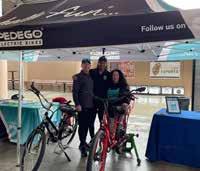
Pedego, America’s #1 electric bike retailer, offers a wide range of bikes, batteries, and accessories. Renting a Pedego bike is the best way to explore the breathtaking safe and beautiful Yorba Lina trails. The most important part of Pedego isn’t high-tech gadgets or fancy bicycle components- it’s you. Pedego treats you like family, helping you find the perfect bike. We offer rentals, retail options, and repairs. Call 657 866-3041, Visit our website: www. pedegoelectricbikesyorbalinda.com



“My wife has always been active and enjoyed being outdoors.
Due to a sudden stroke, she found herself in a health crisis and required post-acute rehabilitation. She needed 24-hour nursing care, assistance with eating and physical, occupational and speech therapy. For her post-acute needs, we chose Park Vista Skilled Nursing – an established facility located in Fullerton. We had a great experience!” – Fullerton family member
ARTICLE BY HEATHER WHITSITT
PHOTOGRAPHY BY JESS VIDANA PHOTOGRAPHY
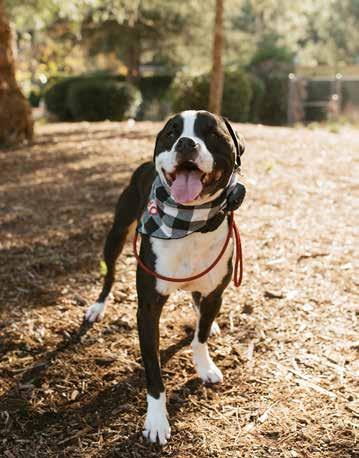
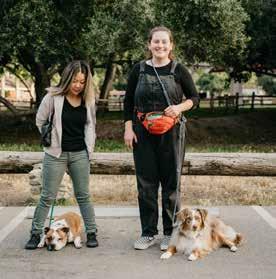
HONEY DOG TRAINING OWNER JESSICA GRAHAM GETS TO THE ROOT OF DOGS’ BEHAVIORAL ISSUES BY ADDRESSING EACH FURRY FRIEND’S UNIQUE NEEDS WITH A CUSTOMIZED APPROACH.
Dogs are definitely a “pawsitively” precious part of life, but pet ownership isn’t always a walk in the park.
When behavioral issues with canine companions arise, Orange County pet parents look to Honey Dog Training for help.
Owner Jessica Graham isn’t fazed by common conundrums like whining, barking, or lunging pets. These are typical behaviors she observes when visiting clients’ homes throughout Yorba Linda and Anaheim Hills–and she approaches each situation without judgment.
“I train dogs to feel calm and good in their surroundings so that they can live the lives we have imagined with them!”
-Jessica Graham
Why are these pet problems so widespread? Jessica has a theory of her own.
“In a world where we have decided that dogs are a multi-billion dollar industry (think toys, food maze bowls, clothing, etc.) we have gone so far away from our dog’s needs versus that of our dog’s wants,” she explains. “I am all about a cute dog hat or swimming pool for your dog— but my priority lies first with providing what our dogs need .”
“To me, it is important to spend more time helping our dogs work through their fears and lack of confidence, and less time taking them places where they could probably care less about being,” she continues.
“Now, I’m not saying taking your dog to a Farmer’s Market isn’t ideal, or that walking along the beach with your dog isn’t a joyous feeling, but does your dog really want to be there?”
When it comes to determining how comfortable your dog may feel in a certain situation or environment, consider the following questions.
“Have we helped them feel good in those environments and set them up for success? Or are we having to pull them away from things constantly? Are we having to avoid various situations? Oftentimes, I see dogs racing to get to things or panting from anxiety/stress that they need to work through on their own,” she says.
CONTINUED >
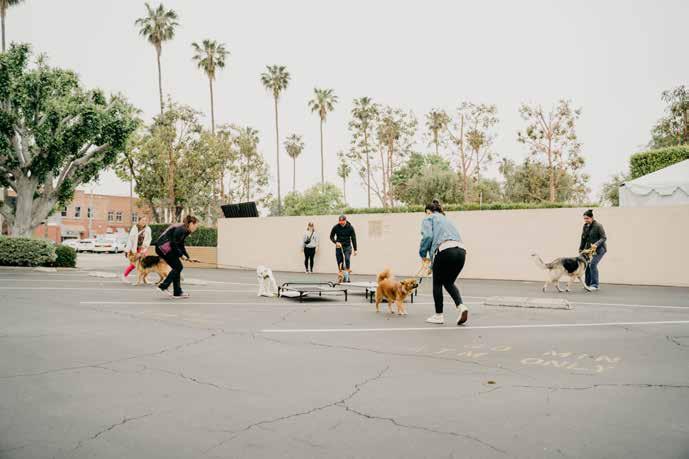
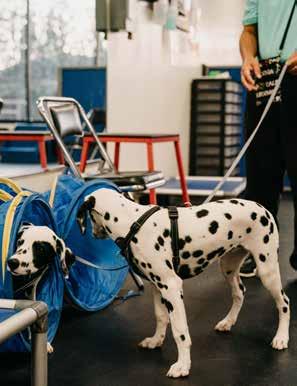
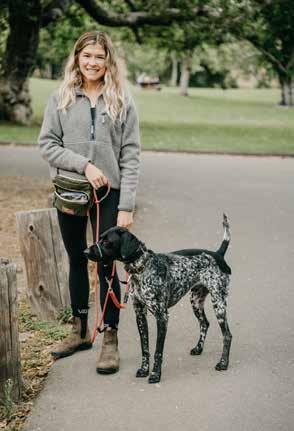
If the scenarios above sound familiar, don’t be dismayed. Instead, consider reaching out to Honey Dog Training to get started on the path to a happier pet and a stronger bond with them.
“This is where I come in!” she says. “I want you to have the life you’ve always wanted with your dog. A life where you can take them to the places you enjoy, seek out the things that they enjoy, and who knows? Maybe you’ll love them, too!”
“My clients love taking their dogs on runs, bike rides, a morning coffee shop run, hiking on trails, and more–and the difference is that the dogs enjoy it, too! They appear relaxed, content, and calm.”
Through her business, Jessica is on a mission to help people foster strong relationships with their dogs by discovering what makes their four-legged friends tick.
“While I’m not a therapy dog trainer, I train dogs with the same mentality,” she says.
“I train dogs to be social. I train dogs to feel calm and good in their surroundings so that they can live the lives we have imagined with them!”
Services offered by Honey Dog Training include everything from a Hybrid Immersive In-Home Program, private in-home sessions, group classes for socialization, and free supportive group virtual lessons to community pack walks–there’s something for everyone.
“If you’re ready to take the next step in order to have the life you’ve always wanted with your dog, please fill out a form at honeydogtraining. com/contact and I will give you a call. My community has grown thanks to word of mouth and social media, so feel free to follow me on all socials as well!”
https://www.honeydogtraining.com/
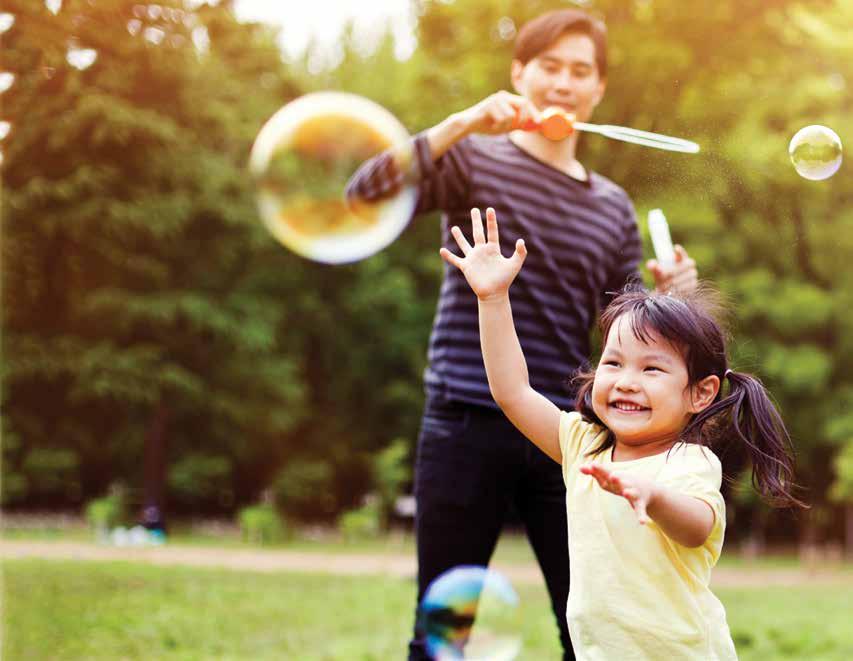
»
»
» Pediatric Vision Care
» Vision Therapy
» Ocular Disease & Ophthalmology
» Low Vision Rehabilitation
» Ocular Prosthetics
» Keratoconus Management
» Dry Eye Management
» Myopia Control
» Sports Vision
» Optical Showroom
»
»
» Screenings
»
»
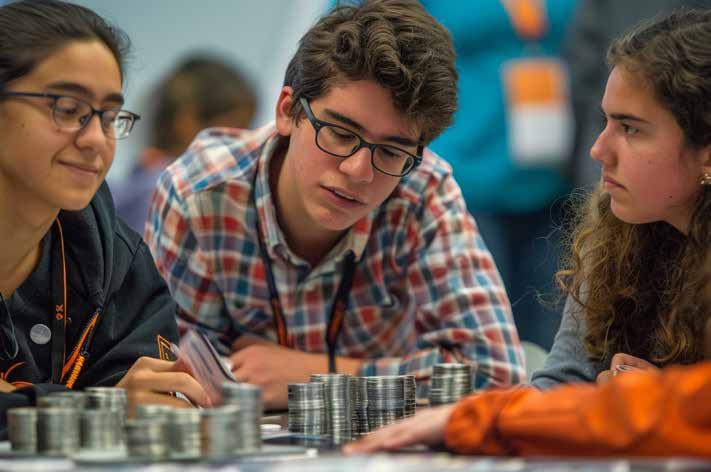
SUPPORTING RESPONSIBILITY, IDENTITY, AND VALUES FOR HEALTHY ADOLESCENT DEVELOPMENT
ARTICLE BY KIMBERLY BLAKER


can be a daunting challenge for parents.
As most parents of adolescents can attest, contending with teens' growing need for independence can be a daunting challenge. But pushing away from their parents is a normal part of adolescence and necessary for teens to develop into healthy, capable adults. Because they are still maturing, however, they do need guidance and support along the way. So how do you give your teen the space to grow and avoid overstepping boundaries, which can alienate and tend to push your teen further away? The first step is understanding the necessary components for teens to become capable adults. Second is knowing how to guide and support your adolescent during this trying stage while providing your teen the freedom to grow.
As kids grow, they need to take on more responsibility for themselves and within the family. Taking responsibility for themselves includes waking up and getting to school on time, and managing homework and extracurricular activities, among many other tasks. Teens also need to develop more responsibility toward others. At home, teens can cook for the family, do more chores, and help care for younger siblings. Other ways teens can develop responsibility toward others is by holding a part-time job or volunteering to serve their community.
Learning to problem-solve and make good decisions is crucial to becoming a capable adult. So teens need lots of opportunities to make their own decisions. There's no doubt, they're going to make mistakes along the way. But the best lessons in life are often a result of mistakes. It's natural for parents to want to protect their kids and prevent them from experiencing pain (physical or emotional). But the mistakes teens make, and
particularly the consequences of those mistakes, are often dull in comparison to those they could potentially make as adults. So don't try to protect your teen from ever making a mistake. By allowing adolescents to make decisions, experience failure, and problem-solve now, they'll have the foresight and skills to make better decisions as adults.
The best way to help your teen develop decision-making skills is to pick and choose when to intervene. Consider the severity of the repercussions if your teen makes a particular mistake. For example, drinking and driving can be deadly not only to your teen but to anyone else on the road. So if your teen doesn't make a responsible decision regarding this, you need to intervene. When the consequences are less severe, parents should still offer guidance. But teens should have much more freedom to decide for themselves and opportunities to fail and learn lessons.
During the teen years, kids struggle with the formation of their own identities. But forming one's own identity is necessary to becoming an emotionally healthy adult. Teen identity formation is seen in many behaviors.
Rebellion. Teens often rebel to differentiate themselves from their parents and authority figures. Rebelliousness can take the form of non-compliance or non-conformity. Either way, a teen will provoke their parents' disapproval to assert the teen's individuality, says Carl E. Pickhardt, Ph.D., in "Rebel with a Cause: Rebellion in Adolescence." Unfortunately, rebellion can lead to self-defeating and even self-destructive behavior. If your teen is rebelling, Pickhardt recommends that parents allow natural consequences to occur, provide positive guidance (repeatedly), and support constructive growth.


The best way to help your teen develop decision-making skills is to pick and choose when to intervene. “ ”
Status. Status symbols are another means by which teens search for their identity. They may insist on wearing expensive shoes and clothing or spend on pricey electronics or cars. This is an area where allowing teens to make their own decisions is often best (so long as they're spending their own money, not yours).
Still, it would be best if you tried to instill in your teen that material things aren't what defines who he or she is, but rather, what's on the inside is what counts.

Idolization. Idols are another way teens search for their identity. Teens often mimic their idols in the way they dress, do their hair, and talk. While this can give teens a sense of belonging, it ultimately results in the loss of their own identities. Let your teen know it's okay to admire their idol. But encourage your teen to be himself or herself and remind your adolescent of their own valuable qualities. CONTINUED >
Cliques. Another way teens try to discover or establish their identity is through cliquish exclusion. Being part of a group can be a good thing because it provides commonality and a sense of security and belonging. But unlike groups, cliques are restrictive and allow only certain types of people in. Teens are very good at disapproving of and excluding others who dress or act differently from themselves and often form cliques. If your adolescent is part of a clique, discuss the importance of still being oneself, having a mind of their own, and standing up to bad behavior that may occur within the clique.
It's only natural parents want and hope their kids will grow to hold the same values as their parents. But during the teen years, as adolescents try to carve out their own identities, they begin to question some of those values and experiment with new ones. Some of the values your teen comes to hold or oppose
may go against your own. In some cases, these different values may even be self-destructive. Still, teens often carve out new positive values on their own as well.
Although teens will ultimately choose the values they'll live by, parents can still try to influence positive values in their teens. The key is talking with your teen and allowing for open dialogue. When you do speak with your teen, ask open-ended questions that make your adolescent think. For example, ask, 'what would you do if you were with a friend who was bullying someone?' Also, ask is your teen feels pressured to ignore certain values. If so, ask how they think they can overcome that pressure.
Finally, lead by example. Throughout the teen years, look for teachable moments. Find opportunities to invite your teen to join you in value-based activities. That way, your teen can experience the impact it has on others, the world, and their own sense of self-worth.




Throughout the teen years, look for teachable moments. Find opportunities to invite your teen to join you in value-based activities.




"ENHANCING
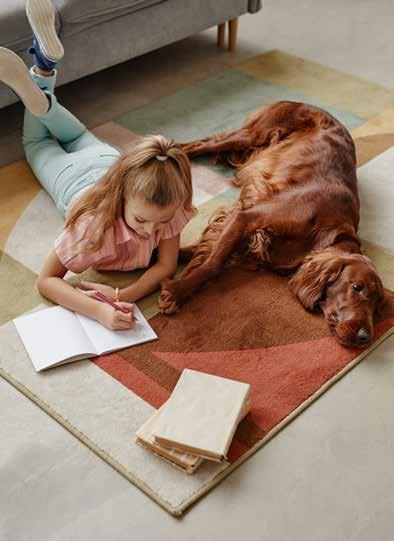
ARTICLE BY HEATHER WHITSITT
From companionship to reduced stress, the experience of pet ownership for a child is a gift that keeps on giving.
Studies consistently show that, when done with adult guidance, caring for a family pet enriches the lives of everyone in the household.
Here are several ways a pet can enhance children’s lives emotionally, socially, cognitively, and more.
The daily care and maintenance of a pet, like a dog, is a surefire way to spark increased responsibility in children.
Tasks like feeding and watering, walking, training, and socializing a pet instill a sense of leadership and pride in the caretaker.
Establishing a routine for their pet may lead to improved responsibility and self-confidence when it comes to executing self-care duties as well.
There’s a reason that animals are frequently utilized as service or therapy tools. In addition to being highly intuitive and intelligent, canines, for example, provide a sense of calm and comfort to those around them.
Research shows that the simple act of petting a dog or taking them for a walk boosts serotonin levels.
Walking or running with your dog is also great exercise! In turn, exercise reduces stress by lowering levels of cortisol, a stress-related hormone, and blood pressure.
Children dealing with a range of emotional or cognitive issues can find comfort in talking to an animal about their feelings, or from simply being in their soothing presence.
Pets love you no matter what. Their unconditional love, loyalty, and affection teach their caretakers to provide love in the same way.
Having a pet combats loneliness or feelings of isolation by providing consistent companionship and friendship.
Building a bond with a pet boosts self-esteem and strengthens empathy and compassion in their owners.
For children who are less likely to initiate social interaction, taking pets to the local dog park, on pet “playdates,” or to group training sessions can be an easy way to stretch their own social skills, too.
Researching a pet’s species, including the history, behavioral traits, and other facts about their furry or feathered friend fosters opportunities to learn about the larger animal world as a whole.
Pet ownership also boosts kids’ brains by improving their working memory and building a connection to nature. When children read to their pets, it can also strengthen their literacy, confidence, and oral reading skills.
Better heart health isn’t the only well-being benefit of pet ownership.
Living with a pet can build up a child’s immune system, as well as lowering the risk of certain food allergies, resulting in overall improved physical health.
If you’re on the fence about adding a pet to the mix, consider these many advantages, which, according to Rustin Moore, DVM, PhD, dean of the College of Veterinary Medicine at The Ohio State University, can make for a valuable family addition.
“While you might see a pet as a lot of extra work, a child sees a pet as a potential best friend and family member.”
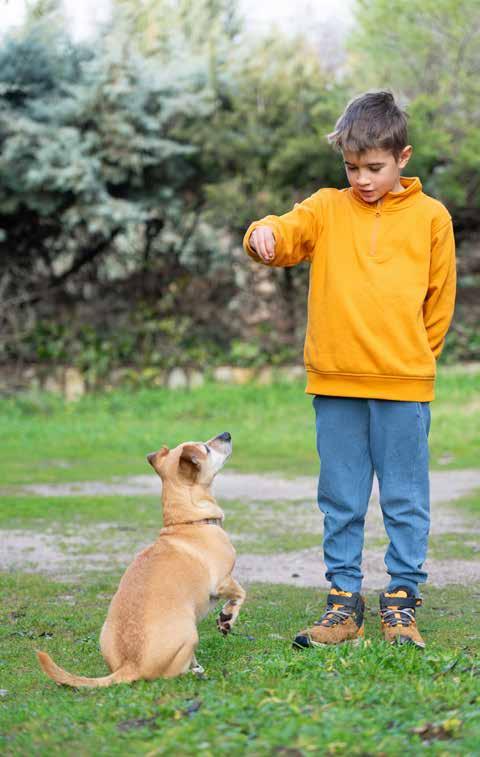
“While you might see a pet as a lot of extra work, a child sees a pet as a potential best friend and family member.”



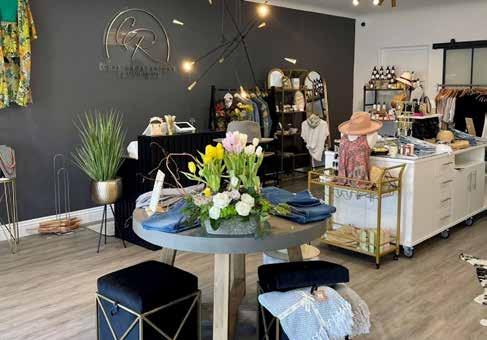










Life lessons that can positively impact a child’s life beyond the warm and fuzzy.
ARTICLE AND PHOTOGRAPHY
BY LISA WIEHEBRINK
We all remember our first pet. Chances are that pet was your first friend, your favorite playmate, your secret keeper, and a source of comfort when you needed it most. Aside from the warm and fuzzy feelings we received, we were also learning valuable life lessons about kindness, compassion, and responsibility in the process. There is no doubt that having a pet brings a special joy to any home but it can be especially good for a child’s overall development.
Children have a natural affinity for animals that lends itself to having a special relationship with pets ranging from dogs, cats, horses, and even lizards and goldfish.

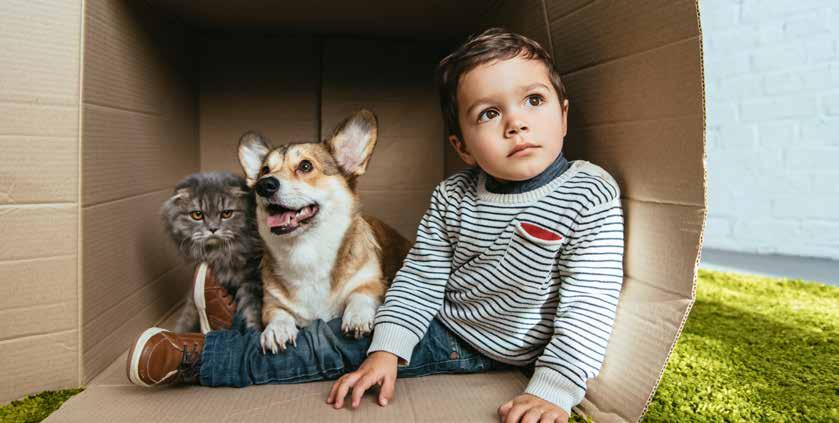
These relationships are often referred to as being magical and transformative for many reasons. Children are just learning about themselves and the world around them so it fascinates them to be responded to by a pet. This keen awareness helps them to learn what is acceptable behavior and unacceptable behavior which ultimately bridges into relationships with people. Successful social interaction cultivates confidence and a confident child is more likely to have higher self-esteem which is vital as they grow through their formative years.
Pets respond to emotional cues and children are more likely to better understand complicated feelings like patience, tolerance, compassion, and kindness when there is a pet in the home. Studies also show that children who learned empathy through having a pet also showed greater empathy toward humans. Perhaps one of the greatest gifts a pet provides is pure, unconditional love. There is no judgment, only acceptance. These attributes inspire kids to do the same which leads to positive social connections with peers and serves as a terrific shield against bullying.
Having a pet in the home also requires responsibility for another living being. By encouraging a child to engage in age-appropriate care of a pet with simple tasks such
as providing fresh water, gentle play, and keeping doors closed for safety, it gives a child a sense of achievement. This empowerment helps a child feel valued which leads to self-assurance. Finally, pets can teach a child about the circle of life. By caring for a sick or older pet, kids learn about selfless acts of love which can actually help them cope with other challenging life events.
When children are raised with pets the ripple effects are boundless. Through the human-animal bond, children learn caring connections toward all living beings making a better future for animals and people. Most importantly, having a pet is fun and brings enjoyment to any household.
About the author: Lisa Wiehebrink is the founder of the non-profit organization Tails That Teach and an award-winning author of the children’s books, Love Me Gently; A Kid’s Guide for Man’s Best Friend and Gray Whiskers; A Kid’s Guide for Loved Ones Growing Older. Her books uniquely bridge the connection between animals and people. Lisa donates the books to humane societies and elementary schools around the world to inspire kindness and encourage literacy. For more information about Tails That Teach, please visit www.tailsthatteach.org
“WHEN CHILDREN ARE RAISED WITH PETS THE RIPPLE EFFECTS ARE BOUNDLESS. THROUGH THE HUMAN-ANIMAL BOND, CHILDREN LEARN CARING CONNECTIONS TOWARD ALL LIVING BEINGS."













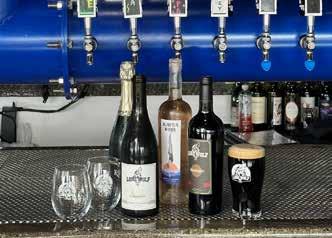














Whether your pup has the obedience of a dog show finalist, or social behavior that makes you want to play dead around others, you can develop more owner confidence with help from this expert trainer.
“Socializing your dog is beneficial for both dogs and their owners,” says Taryn Tyler, a certified dog trainer. “It creates confidence for both dogs and owners and displaces the anxiety we feel when our dogs aren’t behaving like we want them to.”
Taryn says that boundaries can be learned by dogs of any age.
“There’s a nasty perception along the ‘can’t teach an old dog new tricks’ line of thinking,” she says. “While you can’t take a dog with serious behavioral issues and completely turn them around 180 degrees, you can make improvements in how you understand your dog and how they understand you. Dog training isn’t just for struggling pups either. Creating a relationship between you and your canine based on confidence, reliability and reward can turn a good dog into a great dog.”
ARTICLE
BY LISA MOYER
PHOTOGRAPHY BY JANIE
JONES
STYLED BY ANGELA
BROOCKERD
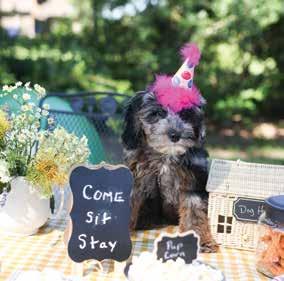
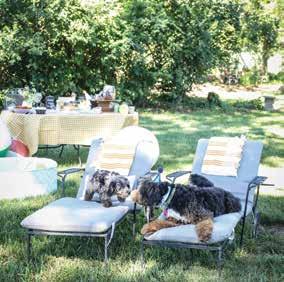

“Creating a relationship between you and your canine based on confidence, reliability and reward can turn a good dog into a great dog.”
CONTINUED >

Taryn stresses that teaching a dog to sit or stay is less about tricks and more about the relationship that builds between animal and owner. “That, in turn, fosters an environment where the next time a family hosts Thanksgiving or has friends over, the owner and their dogs fall into the habit of obeying commands because of the confidence built through all the work put in beforehand.”
Even dogs with a troubled history can achieve improvement.
“We all love our dogs, but they can be stressful when they can’t seem to click in our home environments.
• Socializing is more than taking your dog in public. A guy can dump a bunch of mulch in your driveway and spread it , but he’s not a landscaper until he’s following a plan. When the doorbell rings or a visitor comes into the house, what’s our expectation for the dog? When we’re in public and the dog’s attention is diverted, what’s our plan to refocus them? Socialization is 99 percent working on small steps as part of a larger plan.
• Socializing isn’t about our dogs being the center of attention in public. Everyone loves seeing a dog, but our best outcome for the dog is to go unnoticed. Sitting by our side, ignoring external stimuli, remaining calm—those are things we strive for when socializing a dog.
• When socializing dogs with other dogs, start small. Take a walk with another dog to get them to just exist in the same vicinity. Once they’re able to not be excited by the other dog, work on limited playing in controlled environments.
• If someone comes into your home, let them know what boundaries you’re working on with your dog. You can even suggest asking them to carry a few treats and work on some of the behaviors your dog is already comfortable with.
Once your dog is able to socialize with other pets, playdates are a great way to encourage good play behavior. One way to celebrate your pup’s birthday is to celebrate with their favorite furry friends. Here are a few helpful tips for making your gathering a success.
• Set up play areas for your furry guests to enjoy. This can include a doggy pool or splash pad, chew toys, frisbees, and don’t forget the pet-friendly bubbles.
• Offer party guests birthday attire such as a birthday hat, bandana or party outfit. Set up a photo wall for pet owners to get photos with their furry friends in their birthday outfits. Better yet, make it a costume competition, and invite guests to come dressed up ready to show off their pup’s attire.
• Create a treat display with a pet-friendly birthday cake and various chewy snacks for guests to give their pups.
• Party favors are a must to end your festivities with a bang. Fill party bags with bouncy balls, treats, and pet-friendly bubbles to send your guests off with a smile.






Luxurious Temecula accommodations in the heart of Wine Country. Looking to pamper yourself? Look no further than Gaia Inn & Spa, our adults exclusive retreat nestled in the rolling hills. Or sneak away to the Villa Inn, our newest adults exclusive inn overlooking the world famous De Portola Wine Trail.



•
•
•


AUGUST 1ST
Bubble Show - Bubble-ology
4601 Casa Loma Avenue Yorba Linda, CA 92886 | 3:00 PM

Bubbles, bubbles, and more bubbles! Learn about the science of bubbles and watch as a few lucky participants are put inside a large bubble. Registration and a valid Yorba Linda Public Library card is required. All parties must have at least one attending adult and up to three additional attendees. Space is limited. Please arrive a few minutes early to check in. www.ylpl. org/event-directory
AUGUST 3RD
Hangar Talk-Flying Demo of the North American Rockwell OV-10 Bronco
14998 Cal Aero Drive Chino, CA 91710-9085 | 9:00 AM
Planes of Fame Air Museum presents Hangar Talk subject 'Vietnam' and the flying demo of the North American Rockwell OV-10 'Bronco'. Doors open at 9am. Hangar Talk at 10:30am. 12:15pm, the Flying Demo, Q & A with the aircraft pilot will follow the flight. Food trucks on-site, and fun stuff for our youngest visitors. www.planesoffame.org
The Museum is open until 4:00pm.


AUGUST 4TH
Concert in the Park - Blue Breeze Band


4601 Casa Loma Avenue Yorba Linda, CA 92886 | 5:30 PM
End your weekend on a high note! Pack a picnic dinner, enjoy live music and food trucks with friends and family. Seating is available on the grass, so bring lawn chairs and blankets.

The use of bicycles, skateboards, and scooters is prohibited during concerts. Aug. 4th (Mowtown, R&B, Funk & Soul) 11th - (Beach Boys Tribute) 18th - (Country).
AUGUST 6TH
Double Digits Club: Chocolate Challenge (Ages 10 – 13, Kids Only)
4601 Casa Loma Avenue Yorba Linda, CA 92886 | 3:00 PM
Go chocolate crazy! Let’s have fun eating, making, and playing with all things chocolate!
Space is limited. Registration Required. Open registration begins two days prior to each event. Yorba Linda residents may register beginning one week prior to each event. A valid Yorba Linda Public Library card is required to register. www.ylpl.org/event-directory
AUGUST 17TH
Family Art Experience
Yorba Linda Cultural Arts Center, 4802 Lakeview Ave, Yorba Linda, CA 92886 | 9:00 AM
Family Art Experience is a series of workshops designed for families to engage in art experiences and exploration together. Each month focuses on one form of art, such as acrylic painting, watercolors, ceramics, culinary arts, jewelry making, and much more! Each date consists of four 45-minute time slots to choose from. Pre-registration is required online. Call 657-242-4660 for more information. Cost: $15 per family
AUGUST 17TH
4601 Casa Loma Avenue Yorba Linda, CA 92886 | 7:00 PM
Enjoy a Saturday evening in the park while watching a family-friendly movie on our 20-foot inflatable movie screen. No pre-registration is required. Bring a blanket or lawn chair for seating and some snacks! Movies shown are to be determined. Movies begin at dusk. Cost: Free









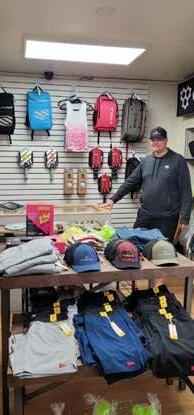














This high-flying musical has been delighting audiences of all ages for close to 70 years and is now being brought back to life in a new production directed by Emmy Award winner Lonny Price. Peter Pan embraces the child in us all so go on a journey your entire family will be Hooked!
NOLAN ALMEIDA ( Peter Pan) appeared as Charlie in Charlie and the Chocolate Factory at the age of seven, and he’s been performing ever since. His last appearance was as Crutchie in Newsies directed by Richard J. Hinds at 5-Star Theatricals. Nolan hails from Orange County, California, where he and his sister grew up putting on magic shows for his parents. Nolan used to attend Esperanza High School and was a regular participant in their theatre program. When he’s not on stage, Nolan can be found with a guitar in one hand and a bottle of
hot sauce in the other. He also loves writing, skateboarding, and making movies with his friends. Nolan has always loved the story of Peter Pan. Playing this iconic role and introducing his generation to Peter Pan’s magic is a dream come true! Endless gratitude to his acting coach Danielle Keaton for introducing him to the art of acting and his family and friends for their constant support.
Peter Pan will be at Segerstrom Center for the Arts in Costa Mesa from August 6 - 18, 2024. Tickets are available at SCFTA.org
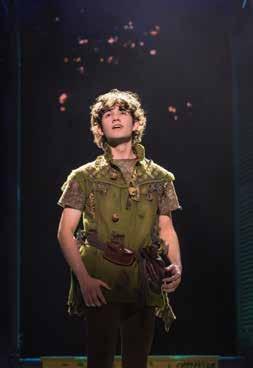
ARTICLE
BY
SUSIE LOPEZ
PHOTOGRAPHY
BY
MATTHEW MURPHY
Nolan Almeida, the 17-year-old actor, attended Esperanza High School.
